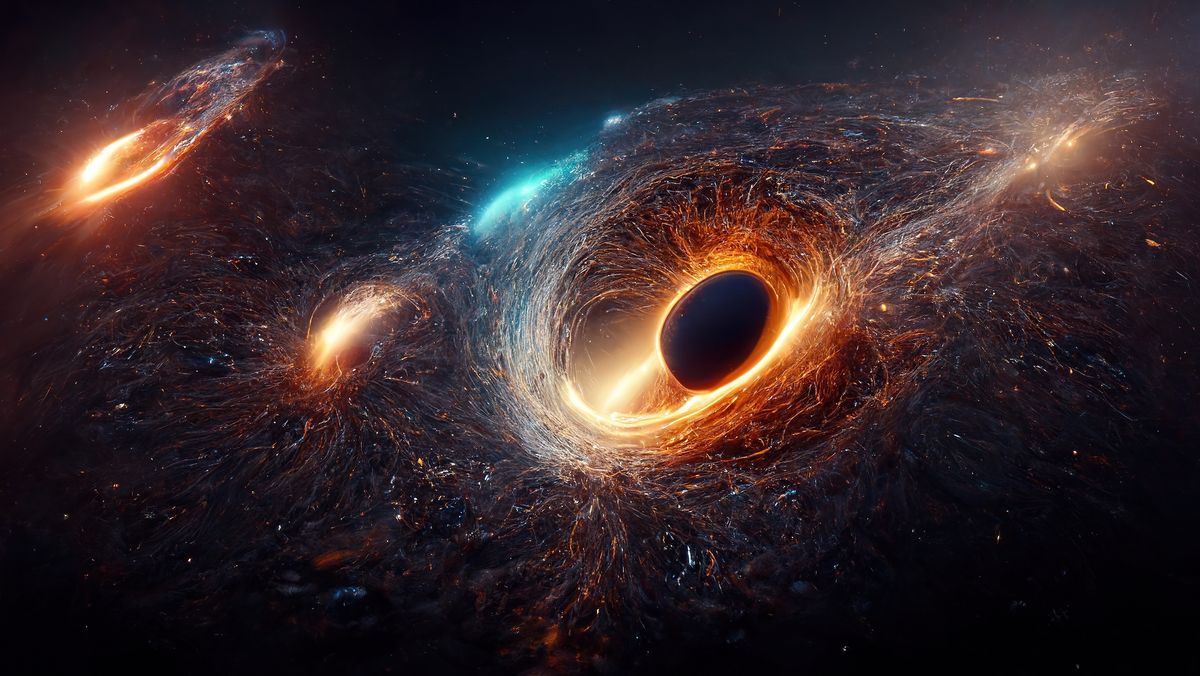
Astronomers utilizing the Dark Energy Spectroscopic Instrument (DESI) have uncovered a remarkable collection of black holes, including many that serve as rare “missing links” in the evolution of these cosmic giants.
This extensive investigation, which examined 410,000 galaxies, revealed an astonishing 2,500 candidate dwarf galaxies harboring active black holes at their cores, along with an additional 300 candidates for intermediate-mass “missing link” black holes. This marks the largest discovery of either type of black hole to date.
The insights gained from this data will enhance astronomers’ understanding of how black holes develop from their initial stages and influence the formation of surrounding galaxies. The research team published their findings on February 19 in the Astrophysical Journal, and the paper is accessible via the arXiv preprint database.
“When a black hole in a galaxy begins to feed, it releases a huge amount of energy into its environment, transforming into what we refer to as an active galactic nucleus,” said lead author Ragadeepika Pucha, an astronomer from the University of Utah, in a statement reportedly stated. “This intense activity acts as a beacon, enabling us to detect concealed black holes within these smaller galaxies.”
‘Missing Links’ in the Cosmos
Black holes originate from the collapse of massive stars and grow by consuming gas, dust, and stars, as well as colliding with other black holes. In many instances, friction causes the material spiraling toward them to heat up and emit light detectable by telescopes, forming active galactic nuclei (AGN).
Astrophysicists firmly believe that all large galaxies, including our own, possess black holes at their centers. However, identifying smaller black holes within dwarf galaxies is significantly more challenging due to their limited size.
Related: Ultra-rare black hole discovered in the Milky Way’s center
Moreover, the current catalog of black holes highlights a significant gap in our cosmic understanding. Presently, known black holes are generally classified into two categories by size: stellar-mass black holes, which range from a few to several dozen solar masses, and supermassive black holes, colossal entities ranging from millions to about 40 billion solar masses.
Despite this, evidence detailing the transition of black holes between these two mass categories remains scarce. Intermediate-mass black holes, theorized to fall between 100 to 100,000 solar masses, are particularly elusive. Although researchers have identified around 150 potential candidates, no definitive intermediate-mass black holes have yet been confirmed.
To assist in the exploration of AGNs and intermediate black holes, the researchers leveraged DESI, an instrument located on the Nicholas U. Mayall 4-meter Telescope in Arizona. This tool accurately tracks the positions of millions of galaxies on a monthly basis to examine the universe’s expansion up to the current era.
By analyzing the data accumulated during DESI’s initial year, which is part of a planned five-year project, scientists discovered an unparalleled number of dwarf galaxy candidates and intermediate black holes, effectively tripling the total count of such candidates.
This substantial discovery has significantly broadened the data available for astrophysicists investigating these cosmic mysteries, while simultaneously introducing new conundrums.
Interestingly, the black holes identified within dwarf galaxies are anticipated to lie within the intermediate-mass category; however, only 70 of the recently identified intermediate-mass black hole candidates correspond with dwarf AGN candidates. The research team’s next steps will focus on addressing these intriguing findings and the questions they raise.
“For instance, is there a connection between the formation processes of black holes and the types of galaxies they occupy?” inquired Pucha. “Our extensive collection of new candidates will enable us to delve into these enigmatic questions, enhancing our knowledge of black holes and their critical influence on galaxy evolution.”









